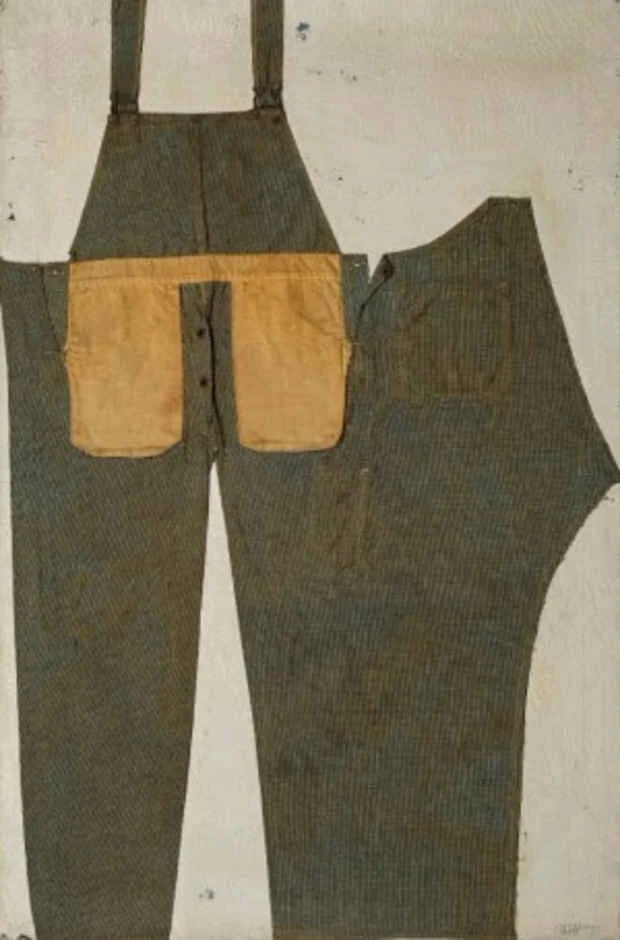From October 23rd through November 27th, The AVA Gallery and Art Center presents Charles A.Platt/ Commemorative Retrospective, an exhibition featuring a comprehensive retrospective devoted to the work of Charles Adams Platt (1932-2020.) The exhibition examines Platt’s integration of found objects into his works, using deconstructed clothing and personal artifacts to create large-scale abstract collages that tell stories and bring memories to life.
Platt began his work in collages in 1959, when he discovered a pair of workman’s overalls hanging over a blank piece of canvas. He was immediately struck by the image, and it later became his first piece, “The Hired Man.” Since then, he has furthered this study of the relationship and meaning of objects, working them into compositions with a focus on the nature of the objects themselves. As he puts it, he formalizes and arranges “memories and thoughts through the discarded clothes and objects of places and people’s lives.”
The Hired Man, 1959, mixed media, 58 x 38 inches
Though his palette was an accidental array of discarded clothing, blankets, and household items, there was nothing random about his arrangements– they are meticulously composed descriptions of a space he had sketched or imagined. In describing his process, he states that after the initial inception of an idea “there follows an extended period of development, sketching, refining the whole and describing individual parts of the work, tracing, retracing, and adjusting, pretty much the way [he works] as an architect.”
Unknown Consequences, 2011, mixed media, 48 x 96 inches
Upon viewing his work, one delights in the pure abstract composition and, upon entering more closely, one discovers fun and humor, with objects splayed and spliced, then layered and juxtaposed together. The objects are restructured, cut open to reveal their inner mechanics, and transformed to new shapes with new associations. It is in these small details that Platt is able to evoke powerful responses in the viewer, sometimes using them to narrate the piece. The relationship of the patterns are as important as this evocativeness: the viewer’s eye is intentionally drawn to certain areas, exposing things that may have been missed at first glance.
A graduate from Harvard College and the Graduate School of Design at Harvard, Platt was an award-winning architect in New York City, founding the firm Platt Byard Dovell White. Platt’s career as an artist was closely aligned with his career as an architect. He approached both with the same highly tuned visual ability, seeking to bring the balance and beauty of the world into focus for those around him.


